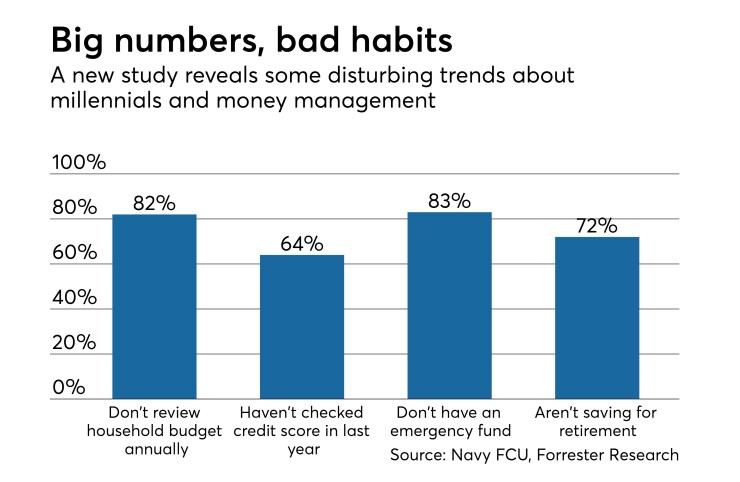Millennial Student Debt Statistics: Alarming Trends Revealed

Millennial student debt in the U.S. Averages about $30,000 per borrower.
This debt impacts over 44 million graduates across the nation. Student loan debt casts a long shadow on the financial stability of many millennials, challenging their ability to buy homes, save for retirement, or start businesses. Understanding the statistics can shed light on the magnitude of this issue.
Recent data reveals that the collective student debt among millennials alone exceeds $1 trillion, a staggering figure that emphasizes the burdensome nature of higher education costs. This debt not only affects personal financial growth but also has broader implications for the economy, as it influences spending habits and economic participation. With millennials striving for financial freedom, the conversation around student loans remains a critical one, punctuating political debates and policy-making. Addressing this student debt crisis requires a nuanced understanding of its statistics and its profound impact on a generation’s economic future.
The Burden Of A Generation
Millennials are known for their digital savvy and social consciousness, but behind the screens and trends lies a pressing issue: student debt. This financial burden weighs heavily on the shoulders of an entire generation, altering their life choices and financial futures.
Snapshot Of Millennial Debt
Millennial student debt is more than a temporary challenge; it’s a defining feature of the generation. With climbing tuition fees and soaring living costs, many Millennials find themselves locked in a battle against an ever-growing debt mountain. The numbers are staggering, painting a clear picture of the crisis:
- Average student loan debt: over $30,000 per graduate
- Percentage with student debt: nearly 70% of graduates
- Total debt: surpasses $1 trillion nationwide
Historical Comparison
When we look back in time, the sharp rise in student debt becomes even more striking. Education expenses have skyrocketed, outpacing inflation and family incomes. A comparison with previous generations highlights this growth:
| Generation | Average Debt at Graduation | Change in Cost of Tuition |
|---|---|---|
| Gen X | $15,000 | +235% |
| Baby Boomers | $2,000 | +1,120% |
| Millennials | $30,000+ | +213% |
| Adjusted for inflation | ||
Clearly, the financial hurdles faced by Millennials are unprecedented. With higher education more expensive than ever, Millennials are shouldering debts that are out of line with historical norms.
Dissecting The Numbers
Dissecting the Numbers: When we peel back the layers of millennial student debt, a complex picture emerges. Millennials find themselves grappling with significant financial burdens from their educational pursuits. To understand the extent of this issue, we analyze two critical aspects: the average debt by education level and the variations across different states.
Average Debt By Education Level
Education should pave the way to financial stability, but for many, it’s the source of debt. Degrees often come with a hefty price tag. Let’s dive into the typical debt figures for different educational tiers.
| Education Level | Average Debt |
|---|---|
| Associate Degree | $20,000 |
| Bachelor’s Degree | $28,000 |
| Master’s Degree | $50,000 |
| Professional Degree | $100,000 |
The numbers reveal a clear trend: the higher the education level, the larger the debt.
Variations Across States
Not all states share the same story when it comes to student debt. State-specific factors create a mosaic of debt levels. Let’s explore a summarized list of states with the highest and lowest student debt loads.
- New Hampshire leads with the highest average debt of over $39,000.
- Utah ranks lowest, with averages around $18,000.
This variability highlights a geographical dimension to the millennial student debt crisis.
Higher Education Or Higher Debt?
Millennial student debt continues to be a critical topic. Many millennials face a challenging decision: pursuing higher education or avoiding the potential burden of massive debt. This deep dive into student debt statistics will shed light on the cost of higher learning and its financial implications for a generation.
Tuition Inflation Over The Years
The story of tuition inflation is a concerning one. Year on year, college fees have soared, far outpacing general inflation. This trend places an overwhelming strain on students and families alike.
| Year | Average Tuition Cost | Adjusted for Inflation |
|---|---|---|
| 2000 | $5,000 | $7,500 |
| 2010 | $10,000 | $12,000 |
| 2020 | $15,000 | $15,500 |
Approximations in 2020 dollars.
Impact Of Private Loans
Private loans often come into play when federal funds fall short. Unlike federal loans, private loans can carry higher interest and less forgiving repayment schedules.
- Interest rates vary widely with private lenders.
- Repayment options are often less flexible.
- Debt can quickly become overwhelming.

Credit: www.reddit.com
Consequences On Millennial Livelihoods
Millennial student debt is more than just a financial burden. It casts a long shadow over the lifestyles and pivotal milestones in the lives of those it touches. Many young adults find themselves tethered to debt, influencing key life decisions well into their 30s and beyond. Let’s explore how heavy student loans are impacting the very fabric of millennial livelihoods.
Delay In Major Life Events
Student debt holds millennials back from embracing life’s key moments. Below, common dreams deferred by financial constraints are listed:
- Home Ownership: A distant dream for many, as saving for a down payment is often unfeasible.
- Marriage: Partnership plans are pushed back due to financial insecurities.
- Starting a Family: The costs of raising children seem overwhelming on top of debt repayments.
- Retirement Savings: Long-term saving takes a backseat when short-term debt looms large.
Mental Health And Financial Strain
It’s not just wallets that feel the pinch; mental well-being suffers too. As debts mount, stress levels often rise. This can lead to:
| Financial Anxiety | Low Morale | Delayed Healthcare |
|---|---|---|
| Concerns over debt can cause constant worry | Sense of achievement is diminished by debt | Health issues may go unchecked to save money |
Navigating Through The Financial Quagmire
Millennial Student Debt Statistics: A Deep Dive into the Numbers
Millennials face a unique financial landscape, one marked by towering student debt. This burden affects every aspect of their financial health, from buying homes to starting families. Today, understanding the student debt maze is not just about acknowledging the figures; it’s about finding viable paths through the financial quagmire.
Debt Forgiveness And Income-driven Repayment
Debt forgiveness programs offer a glimmer of hope for burdened graduates. These programs, often based on public service jobs, can pare down or eliminate debt. Yet, many remain unaware of how to qualify or apply. Millennials should scrutinize the Public Service Loan Forgiveness (PSLF) program details:
- 120 qualifying payments
- Full-time employment in public service
- Direct Loan ownership
Income-driven repayment plans can also ease the pressure. These plans adjust monthly payments based on income and family size. Four main plans exist:
| Plan Name | Payment Percentage | Duration |
|---|---|---|
| IBR | 10-15% of discretionary income | 20-25 years |
| PAYE | 10% of discretionary income | 20 years |
| REPAYE | 10% of discretionary income | 20-25 years |
| ICR | 20% of discretionary income | 25 years |
The Role Of Financial Literacy
Mastering financial literacy sets the groundwork for managing student debt. Knowledge is power; understanding interest rates, repayment options, and budgeting is crucial. Essential financial literacy topics include:
- Reading loan agreements
- Calculating interest accrued over time
- Exploring refinancing and consolidation
Engaging with interactive tools, like loan simulators, helps visualize debt repayment scenarios. Empowerment through education provides the map to navigate the financial quagmire.

Credit: www.profgalloway.com
Future Prospects And Reforms
The burden of student debt on Millennials has sparked intense debate about the sustainability of the current education financing model. As this generation strives for financial stability, prospects for reform are on the horizon. These potential changes aim to alleviate the pressure of student loans and create a more forgiving economic environment for future graduates.
Policy Proposals For Crisis Mitigation
Lawmakers are exploring various strategies to ease student debt burdens. Let’s look at a few key proposals:
- Income-driven repayment plans: These plans may offer lower monthly payments based on the borrower’s income.
- Loan forgiveness programs: Certain careers, like public service, might qualify for loan erasure after a set number of years.
- Refinancing options: Borrowers could adjust their loan conditions to reflect lower interest rates, potentially reducing overall debt.
The implementation of these measures creates hope for overburdened Millennials, leading to more manageable financial futures.
Predictions For Gen Z And Beyond
As Generation Z steps into the higher education realm, they inherit the complexities of student loans. Here are some predictions:
- Digital savviness: Gen Z’s tech skills could guide them to online scholarships and aid opportunities.
- Increased caution: With debt awareness, more students might choose community colleges or trade schools initially.
- Alternative funding: Crowdfunding and micro-investing platforms are likely to gain traction as unconventional education funding sources.
These behaviors suggest a potential for lower debt levels among future students, provided they maintain financial prudence and take advantage of emerging resources.

Credit: www.sandiegorealestatehunter.com
Frequently Asked Questions Of Millennial Student Debt Statistics
How Much Debt Do Millennials Have?
On average, millennials carry approximately $30,000 in student debt, signifying a significant burden for this generation. This impacts their financial stability and ability to save.
What Percentage Of Millennials Are In Debt?
Around 63% of millennials have outstanding student debt. This reflects the substantial investment in education by this age group, which often affects their other financial decisions.
Why Do Millennials Have High Student Debt?
Millennials face high student debt due to rising tuition costs, increased reliance on loans for education financing, and pursuing higher education at greater rates than previous generations.
Can Millennials Manage Their Student Debt Effectively?
Yes, millennials can manage their student debt with strategies like loan refinancing, income-driven repayment plans, and diligent budgeting to balance their earnings with loan obligations.
Conclusion
Navigating the complexities of millennial student debt takes keen insight and determination. This blog post illuminated the staggering statistics that define a generation’s financial struggle. Empowerment begins with knowledge. Armed with the data we’ve shared, readers can champion informed decisions and strategies that lighten the burden of educational loans.
Let’s spark conversations and advocate for change together. Your financial freedom journey starts here.







